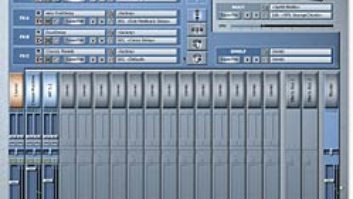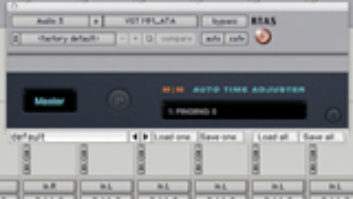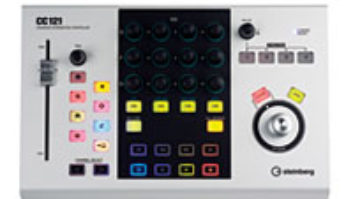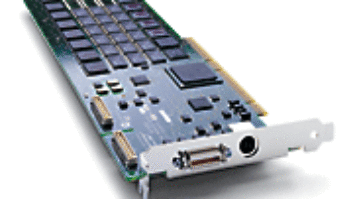
Because I’m primarily a session musician, I hadn’t done much live playing in years. So when a few interesting touring opportunities came up, I was happy to discover the Muse Receptor, a hardware plug-in player that lets you run soft synths and plug-in effects without latency issues or the need to use a computer onstage.
USE SNAPSHOTS
Snapshots let you have many plug-ins sitting on deck, waiting to be used. With snapshots, you can switch between songs immediately, just as you would in Performance mode on any hardware synth. A snapshot contains synths and samples that are loaded into RAM, and they’ll cover as many songs as you can fit into the snapshot. With 16 slots available within each snapshot for loading synths, I usually need only two snapshots for a whole set. And if possible, leave a blank space or two in a snapshot: Last-minute changes in the set you’re playing may require that extra space.
ZLOAD, ZLOAD!
If you switch between snapshots without first enabling Receptor’s Zload feature, Receptor will need to clear its RAM and then load the contents of the new snapshot. This process can take between 20 and 30 seconds. I recommend enabling Zload before the show, which will cut the load time between snapshots down to about five or six seconds. Zload keeps your snapshots pre-loaded in RAM and ready to call up quickly. However, first make sure to check RAM in the SystemMenu to ensure you have at least 25 percent of your RAM available because overtaxing the RAM cuts down on the Receptor’s performance efficiency.
SLOT IN THOSE EFFECTS
Rather than using a few effects slots to add individual FX to a sound, I often use the multi-effects patches found in Native Instruments’ Guitar Rig or FM8. These are great-sounding effects for live use. They’re easy to tweak and control, and they let you stack a greater number of effects on the sound. Some of my patches have distortion, delay, phasing, chorusing, EQ and more using just Guitar Rig and a single FX slot. However, there are a few issues to address. Reverbs can consume a lot of CPU, so unless you absolutely require the reverb, take it off the patch. (And many venues are naturally reverberant anyway.) Also, when used with certain high-powered soft synths, Guitar Rig and FM8 can heavily tax a CPU, which leads to the next point.
THE EYE ON THE METER
If Receptor’s CPU meter is jumping far to the right, it means that Receptor is being overworked, which can lead to freeze-ups. In this case, try something less CPU-intensive for that pad or effects. Sometimes I’ve found that a small sound used in only one part of a song isn’t worth the processing power it requires. When programming, it’s easy to forget the importance of bypassing, leaving multiple excess plug-ins running, so make sure that you bypass anything you’re not using in a snapshot.
NOT ENOUGH KEYS?
One of my controllers is an M-Audio Axiom 61 semi-weighted USB MIDI controller. I like the feel of it, and for certain parts I don’t like to use weighted controllers, which usually have 88 keys. However, having only 61 keys can create problems. With two or three different synths and one-shot samples spread across the keyboard, I need more than 61 keys for a few songs. I put one-shot samples on the keyboard’s extreme left or right, leaving everything in the middle for the sounds I need to play traditionally. The tonality of a sample may not match the note you’re hitting on the keyboard, but you get used to that after playing it for a while.
In a situation where you need extra octaves, the Octave button may get you out of a jam. For instance, on the Axiom or a Yamaha Motif keyboard, the Octave button is right there on the front panel. It jets you right to the outer regions of the keys and can zap you right back immediately. If you can get away with using it while playing, you gain a lot of real estate by jumping octaves on the fly, making it unnecessary to reach for another keyboard. This has saved me in numerous programming situations.
TAKE THE TIME
If possible, use Receptor for a while before you apply it in a working situation. It takes a little time to get used to the rhythm of programming the unit. It’s also a good idea to play through a set on your own numerous times to make sure the combinations of instruments, effects and plug-ins you’ve chosen are stable. This means playing through the entire set note-for-note, and not merely switching patches and hitting the keys.
HELP ME, TECH SUPPORT
As Receptor is a relatively new concept, it’s inevitable you’ll have at least a few important questions. My apologies to the people at Muse Research for perhaps increasing their call traffic, but every call to tech support helped me immensely in getting to know Receptor. When I called to ask a few things, I learned a few major facts in two or three minutes. So call — it will save you time and give you peace of mind.
Jamie Muhoberac is an L.A.-based session musician whose credits include Seal, John Mayer, the Rolling Stones, My Chemical Romance and many others.







